The new 1933 Fords’ design was the first ringing success for Edsel Ford’s design team. Given a new chassis upon which to work, with 6 inches more wheelbase, Edsel displayed his innate gift for design and proportion by identifying in the small four-cylinder Model Y Ford designed by Bob Gregorie for Ford’s Dagenham, England plant the basis for a Ford of unusual balance, grace and functional beauty. The Model T and Model A suffered a marked annual taxation penalty in the UK’s cylinder bore dependent revenue scheme and in designing a new taxation-responsive four-cylinder Model Y for the UK market Bob Gregorie laid out a modern body that owed nothing to prior concepts. It also escaped the notice of Henry Ford who was largely embroiled in the development of the V-8 engine. In the late Twenties and early Thirties automobile buyers were increasingly expressing their preference for larger, heavier enclosed bodies. Suppliers began to deliver wider steel sheets which body manufacturers’ new, larger, presses could stamp into the bigger panels which enclosed bodies needed. That was quite a bit of “bigger” and no small amount of “heavier” for even mass-production marques like Ford, Plymouth, Willys and Chevrolet to handle, however, and exerted an irresistible pressure upon the manufacturers to come up with longer, stronger chassis and more powerful engines. That affected even Ford, where Henry had long insisted upon the virtues of light weight. For 1933 the Ford chassis grew six inches, to 112” wheelbase. The frame was stronger and had a larger X-member for greater rigidity. The flathead V-8, already a superb compromise between light weight and performance, got even better with ten more horsepower. Advances in tire technology allowed Ford to mount 1” smaller 16” diameter wheels with larger tires. Their functional advantage was a better ride but their aesthetic effect was even greater. The scaled-up Model Y body which Bob Gregorie and the Ford draftsmen created under Edsel Ford’s direction perfectly complemented the new frame and wheel/tire package and is today regarded as one of the finest designs of the Thirties. It has endeared itself to generations of collectors. The Hogan Collection’s 1933 Ford Deluxe Tudor Sedan is an exceptionally fine example which has spent its entire life in the Portland area. It was discovered and restored in the early 80’s by Philip O. Doidge in Canby, Oregon. Doidge’s careful and sympathetic restoration of this car was widely known and is exemplified not only by its survival of a quarter century in concours condition but also by his meticulous preservation of important details like the original Portland selling dealer’s lubrication plate on the left door post. Jack Hogan acquired Doidge’s Tudor in 2003 from Eugene Stockhoff who had bought it from Doidge in 1985. At the time it required only detailing and a new set of vermillion wheels matching its striping. It also got new tires. It scored a first place in Early Ford V-8 Club competition in Colorado in 1985. In 2005, twenty years later, it earned first place in its class at the Forest Grove Concours and was judged 954 points in Park City, Utah and 913 points in Tacoma, Washington Early Ford V-8 competition. It earned a Dearborn Award in 2006. Equipped with dual wind wings and windshield wipers, it also has a working Ford radio. At a show in Tacoma in 2007 a judge saw fit to deduct points for over-restoration of its frame, a quarter-century after it was restored. It is one of the finest, most desirable and attractive cars in the Hogan collection with a post-restoration history that is second-to-none.
The new 1933 Fords’ design was the first ringing success for Edsel Ford’s design team. Given a new chassis upon which to work, with 6 inches more wheelbase, Edsel displayed his innate gift for design and proportion by identifying in the small four-cylinder Model Y Ford designed by Bob Gregorie for Ford’s Dagenham, England plant the basis for a Ford of unusual balance, grace and functional beauty. The Model T and Model A suffered a marked annual taxation penalty in the UK’s cylinder bore dependent revenue scheme and in designing a new taxation-responsive four-cylinder Model Y for the UK market Bob Gregorie laid out a modern body that owed nothing to prior concepts. It also escaped the notice of Henry Ford who was largely embroiled in the development of the V-8 engine. In the late Twenties and early Thirties automobile buyers were increasingly expressing their preference for larger, heavier enclosed bodies. Suppliers began to deliver wider steel sheets which body manufacturers’ new, larger, presses could stamp into the bigger panels which enclosed bodies needed. That was quite a bit of “bigger” and no small amount of “heavier” for even mass-production marques like Ford, Plymouth, Willys and Chevrolet to handle, however, and exerted an irresistible pressure upon the manufacturers to come up with longer, stronger chassis and more powerful engines. That affected even Ford, where Henry had long insisted upon the virtues of light weight. For 1933 the Ford chassis grew six inches, to 112” wheelbase. The frame was stronger and had a larger X-member for greater rigidity. The flathead V-8, already a superb compromise between light weight and performance, got even better with ten more horsepower. Advances in tire technology allowed Ford to mount 1” smaller 16” diameter wheels with larger tires. Their functional advantage was a better ride but their aesthetic effect was even greater. The scaled-up Model Y body which Bob Gregorie and the Ford draftsmen created under Edsel Ford’s direction perfectly complemented the new frame and wheel/tire package and is today regarded as one of the finest designs of the Thirties. It has endeared itself to generations of collectors. The Hogan Collection’s 1933 Ford Deluxe Tudor Sedan is an exceptionally fine example which has spent its entire life in the Portland area. It was discovered and restored in the early 80’s by Philip O. Doidge in Canby, Oregon. Doidge’s careful and sympathetic restoration of this car was widely known and is exemplified not only by its survival of a quarter century in concours condition but also by his meticulous preservation of important details like the original Portland selling dealer’s lubrication plate on the left door post. Jack Hogan acquired Doidge’s Tudor in 2003 from Eugene Stockhoff who had bought it from Doidge in 1985. At the time it required only detailing and a new set of vermillion wheels matching its striping. It also got new tires. It scored a first place in Early Ford V-8 Club competition in Colorado in 1985. In 2005, twenty years later, it earned first place in its class at the Forest Grove Concours and was judged 954 points in Park City, Utah and 913 points in Tacoma, Washington Early Ford V-8 competition. It earned a Dearborn Award in 2006. Equipped with dual wind wings and windshield wipers, it also has a working Ford radio. At a show in Tacoma in 2007 a judge saw fit to deduct points for over-restoration of its frame, a quarter-century after it was restored. It is one of the finest, most desirable and attractive cars in the Hogan collection with a post-restoration history that is second-to-none.
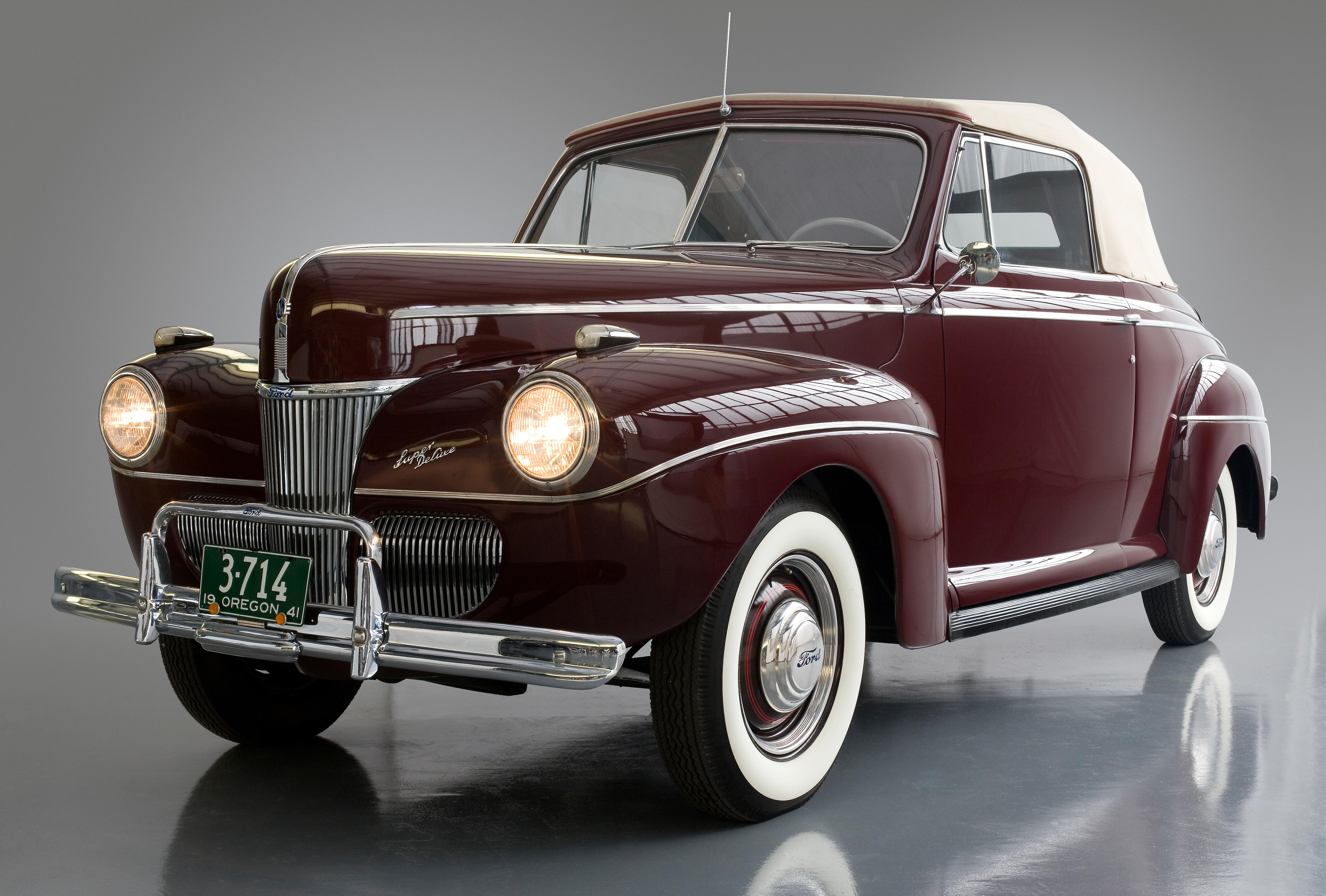
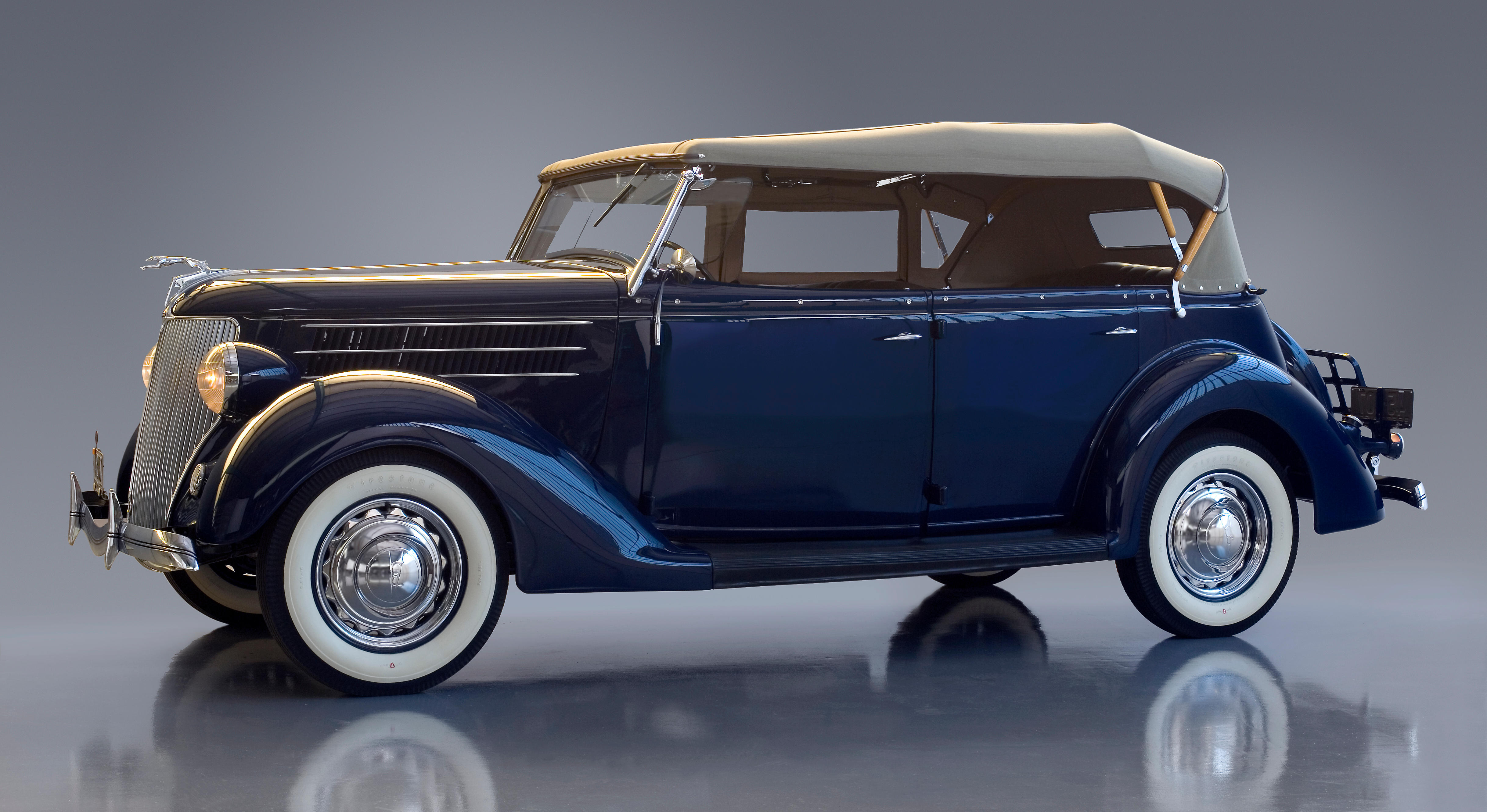
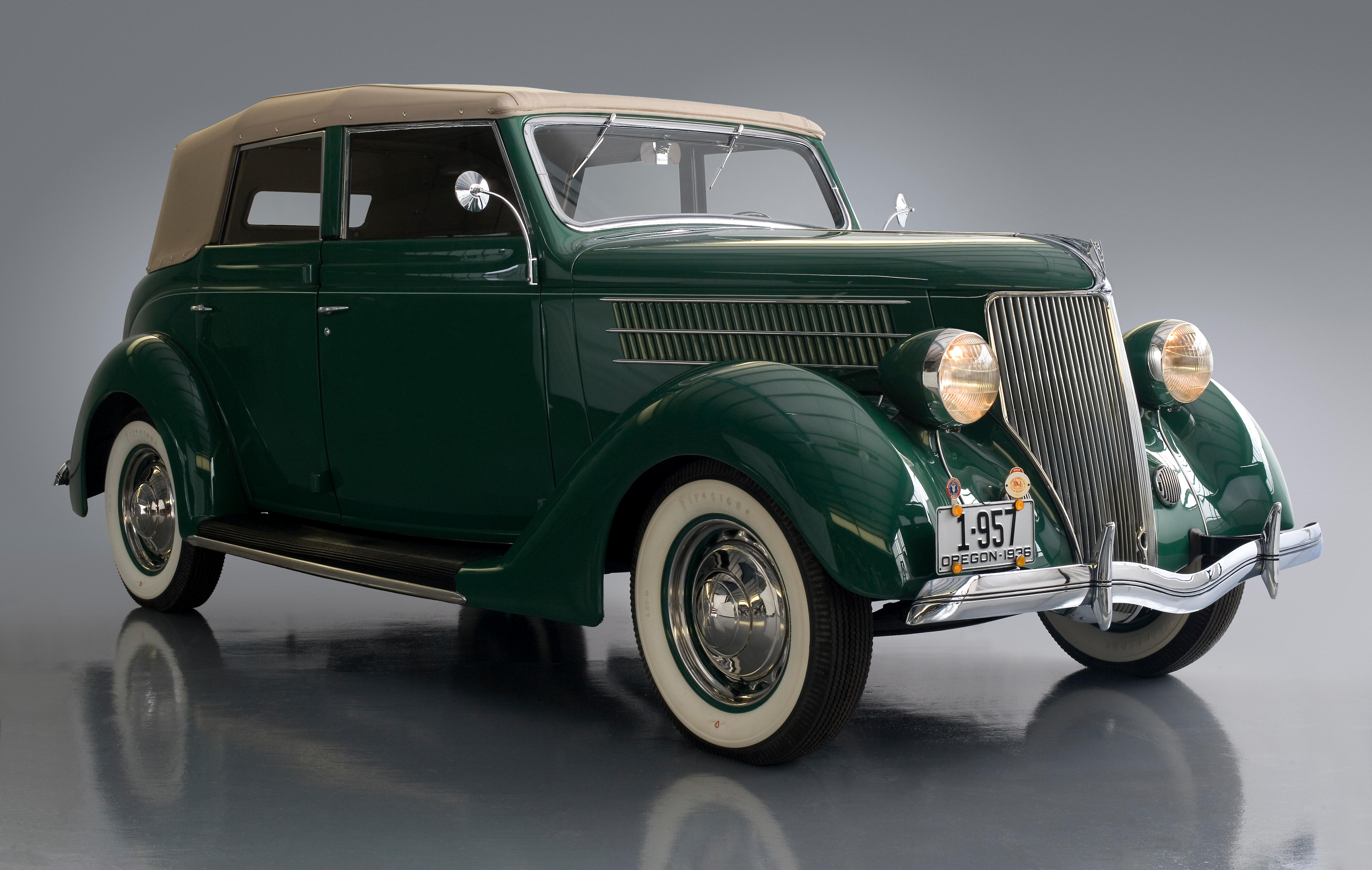
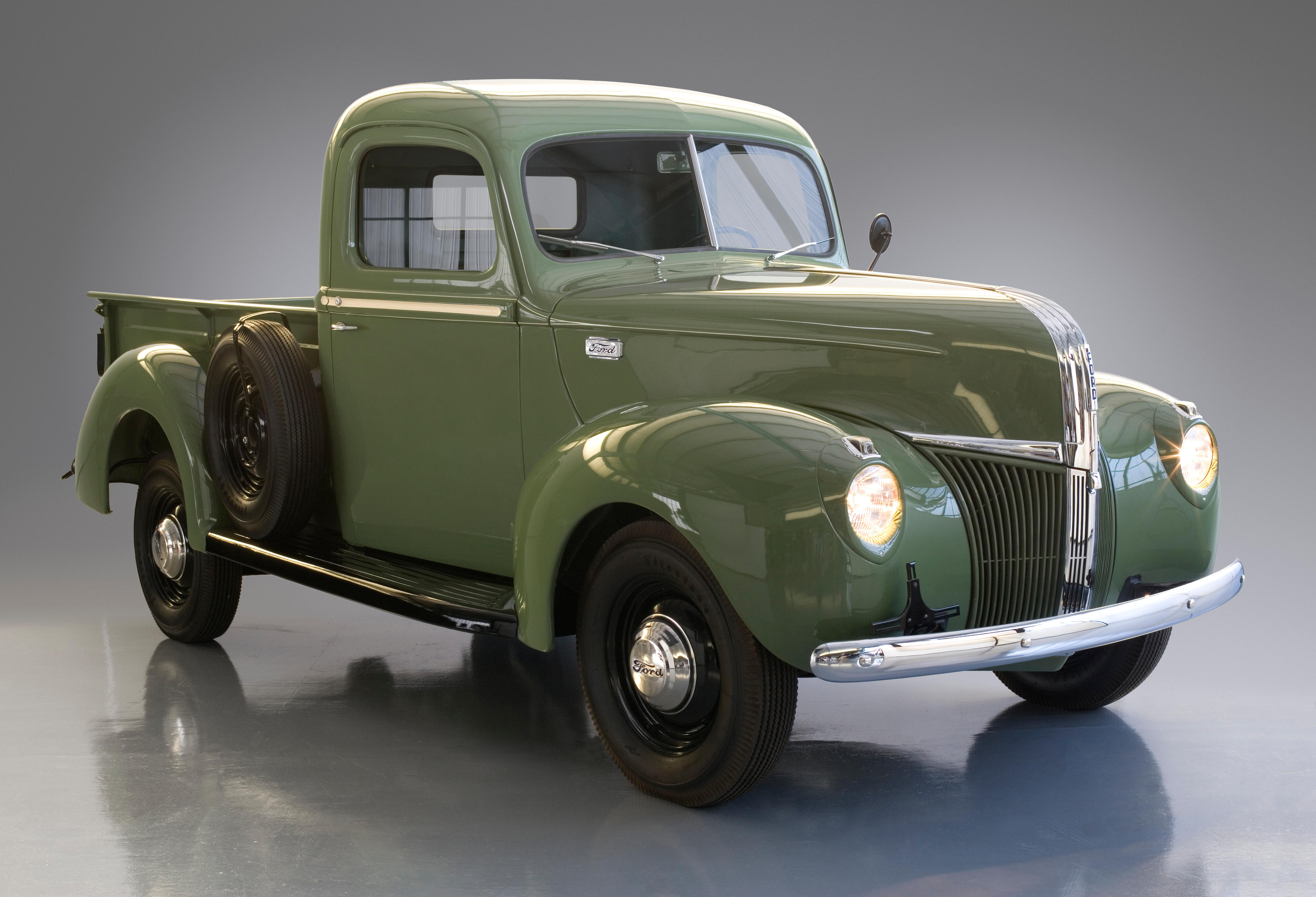
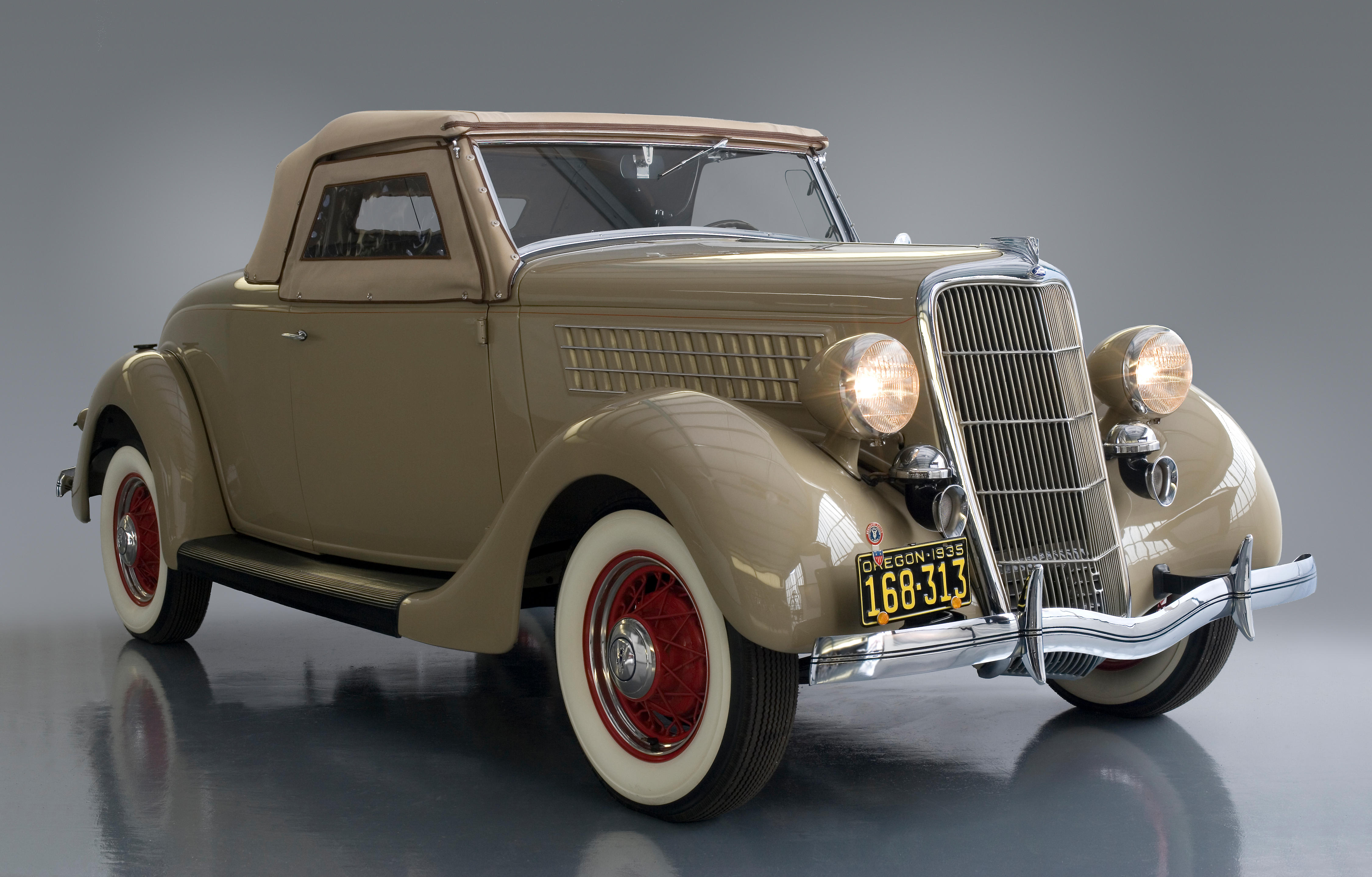

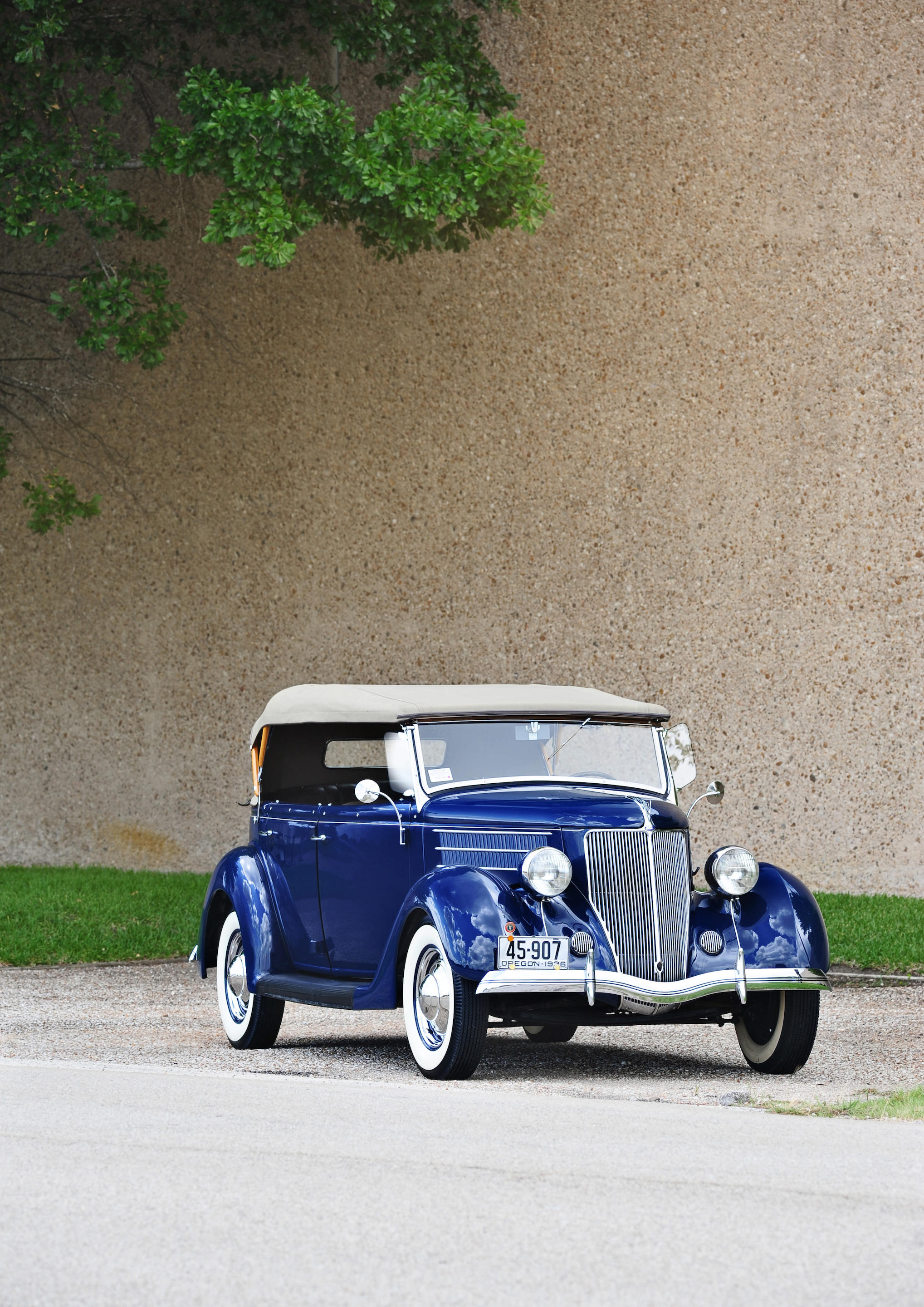
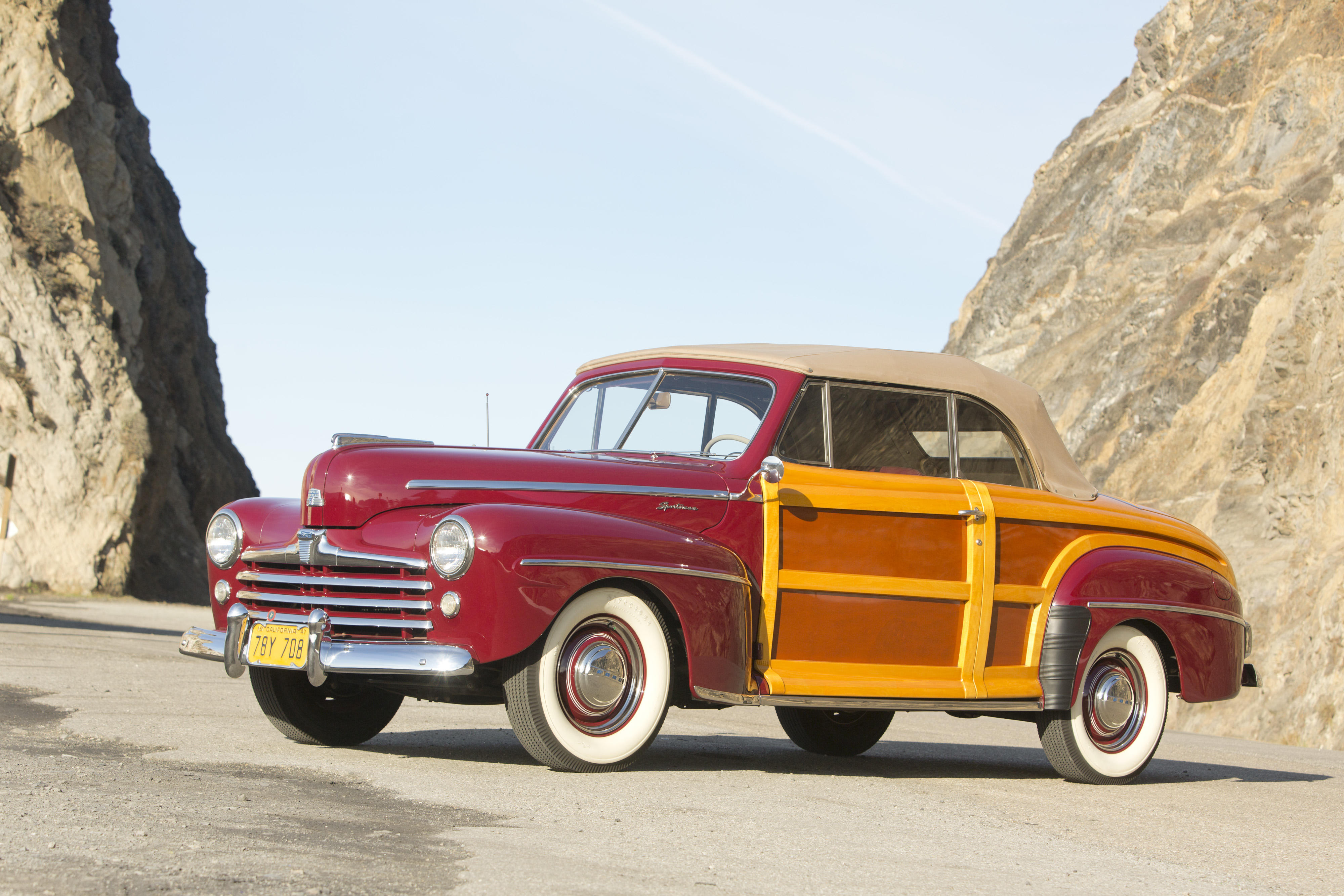
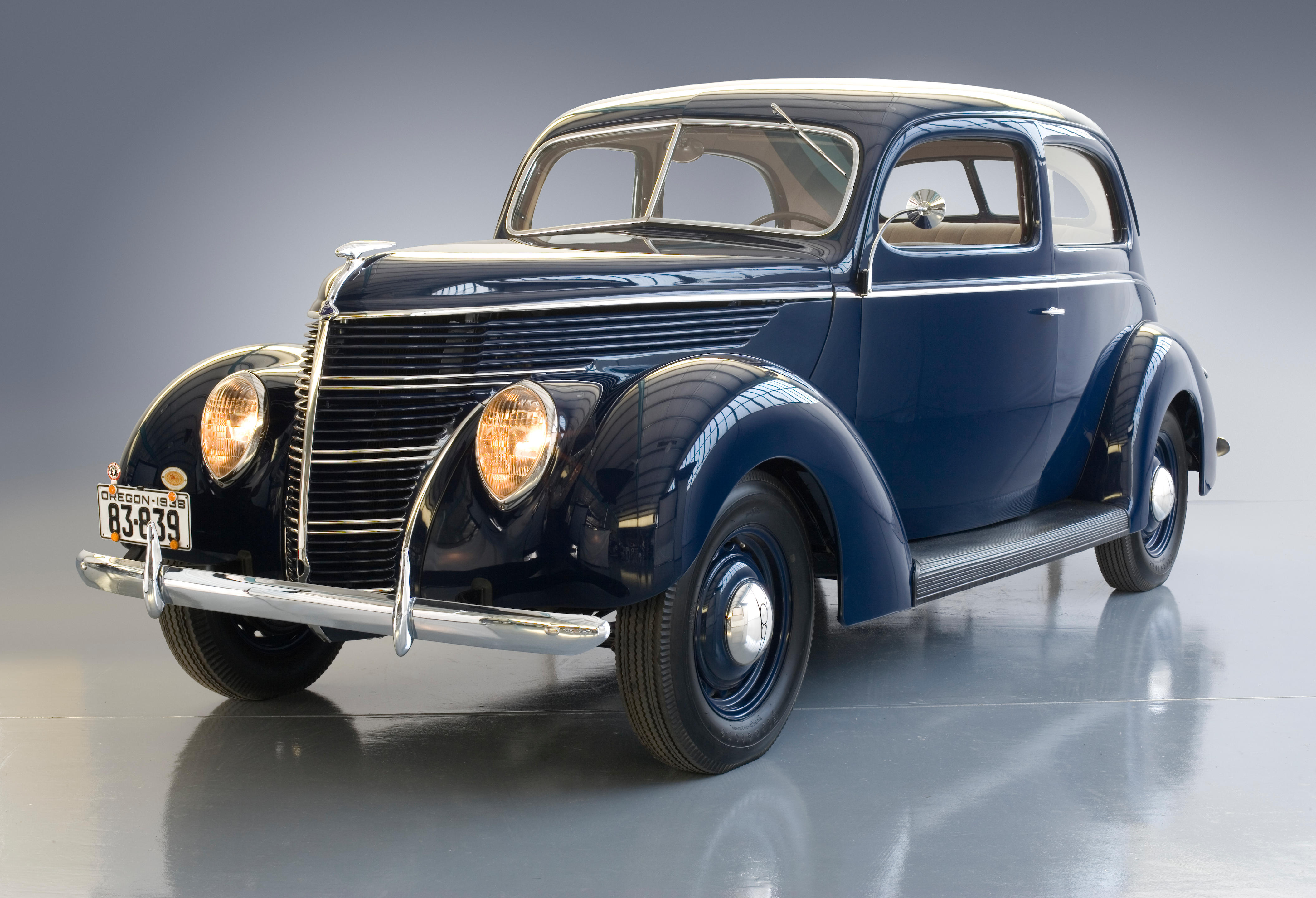
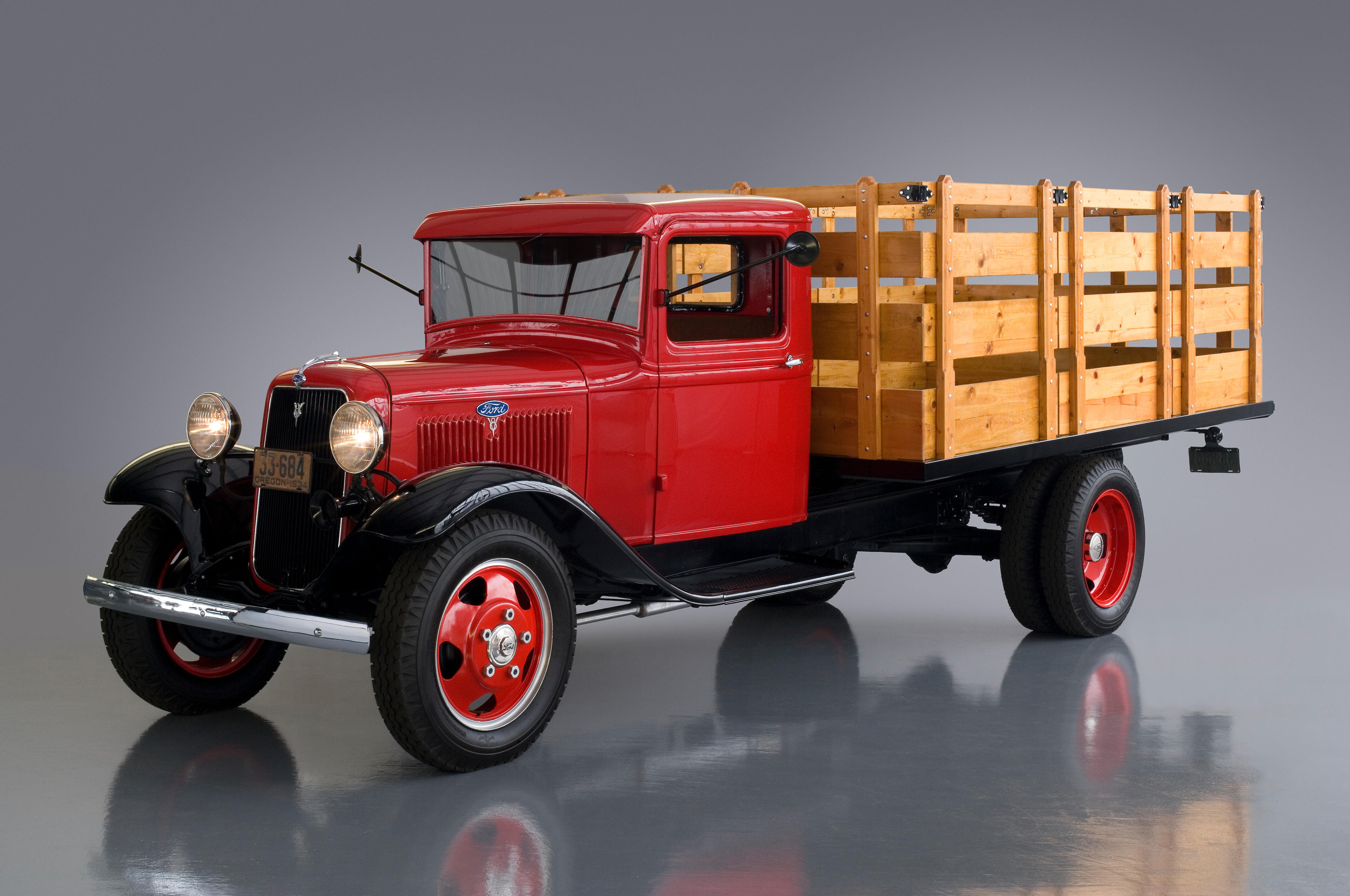
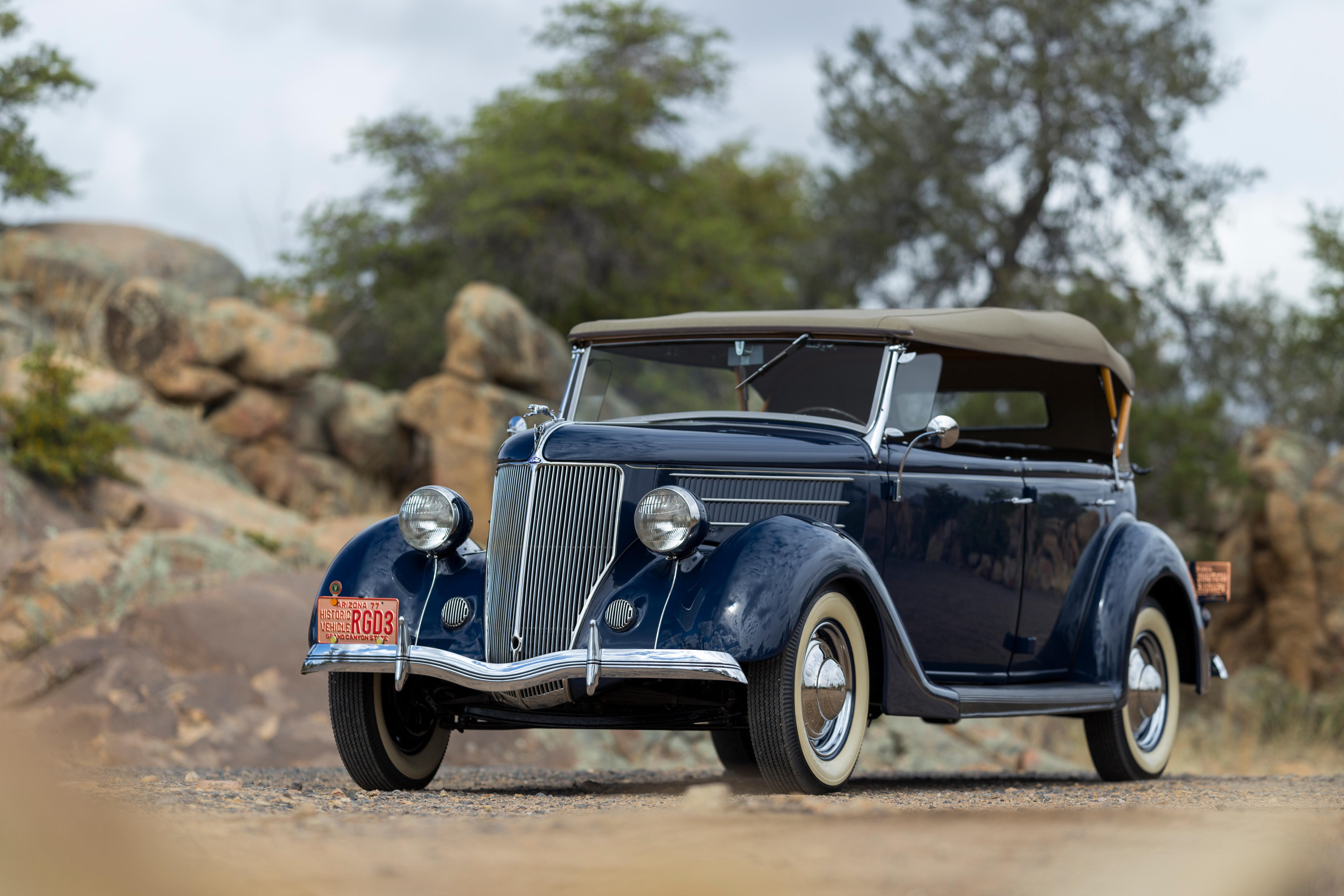
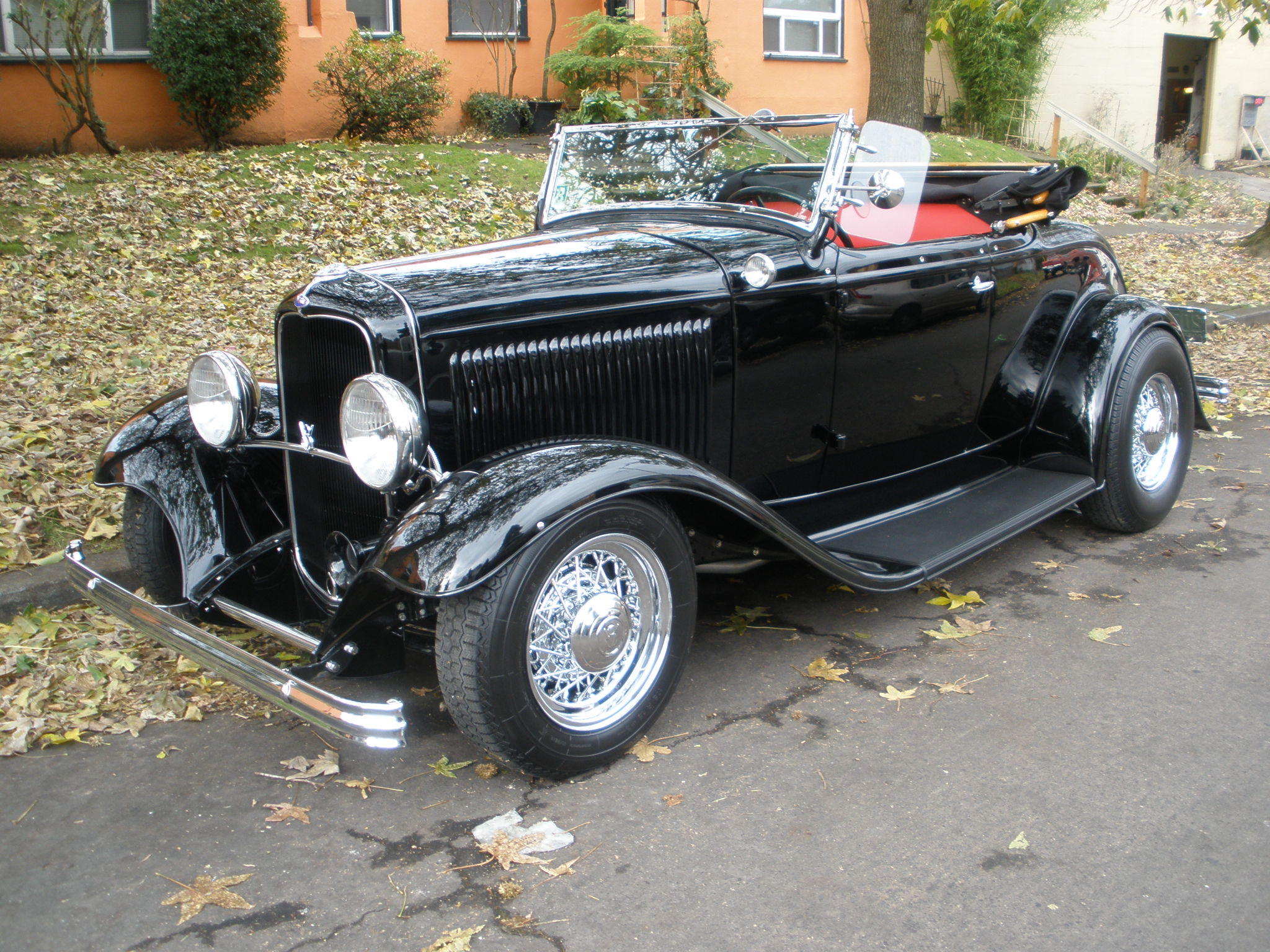
Try LotSearch and its premium features for 7 days - without any costs!
Be notified automatically about new items in upcoming auctions.
Create an alert